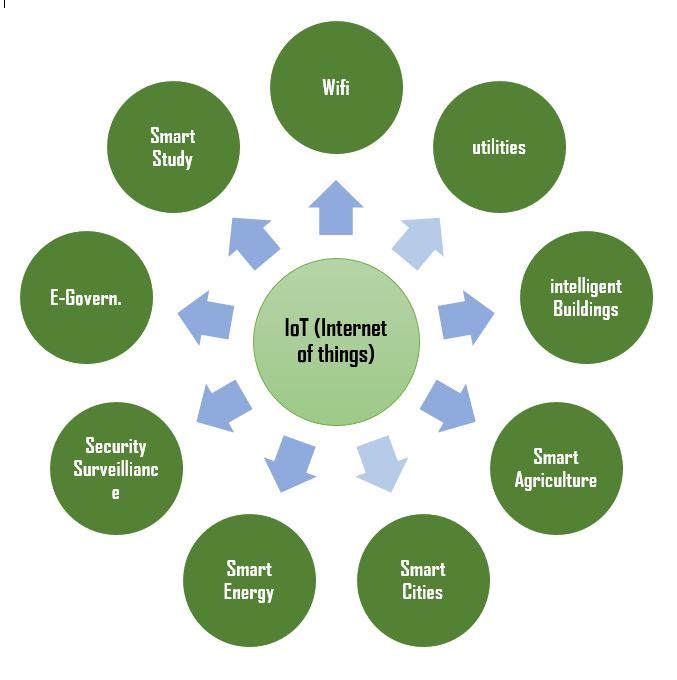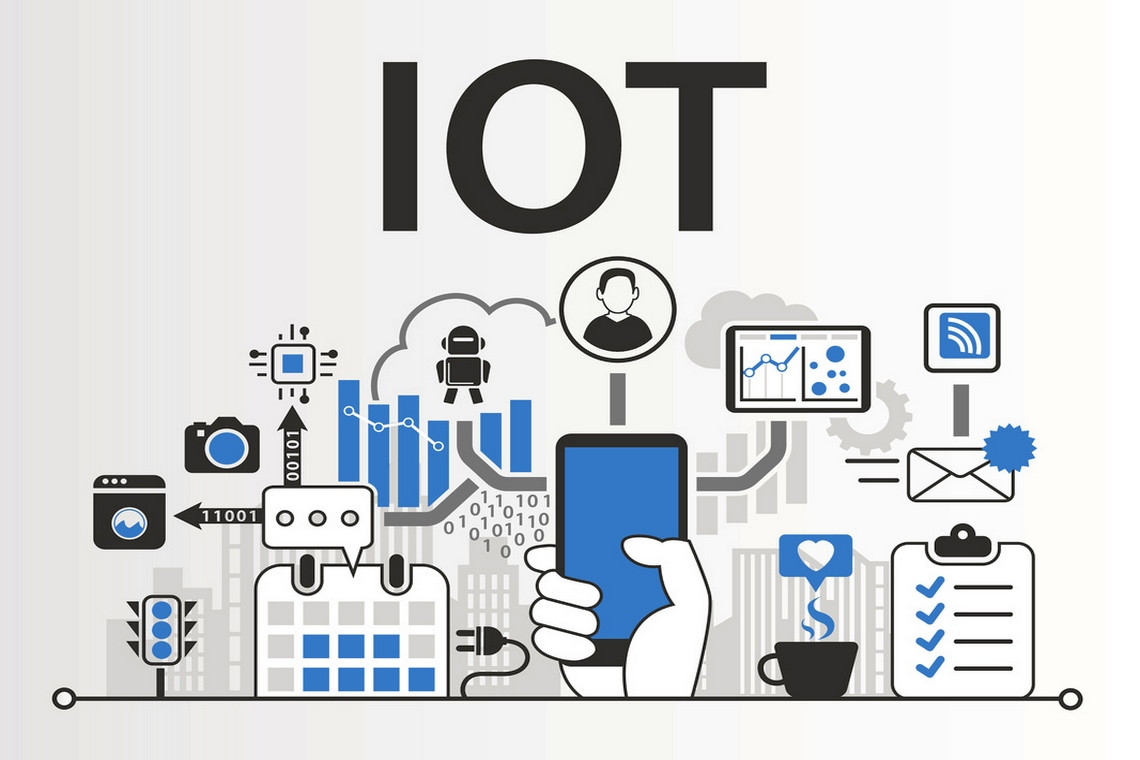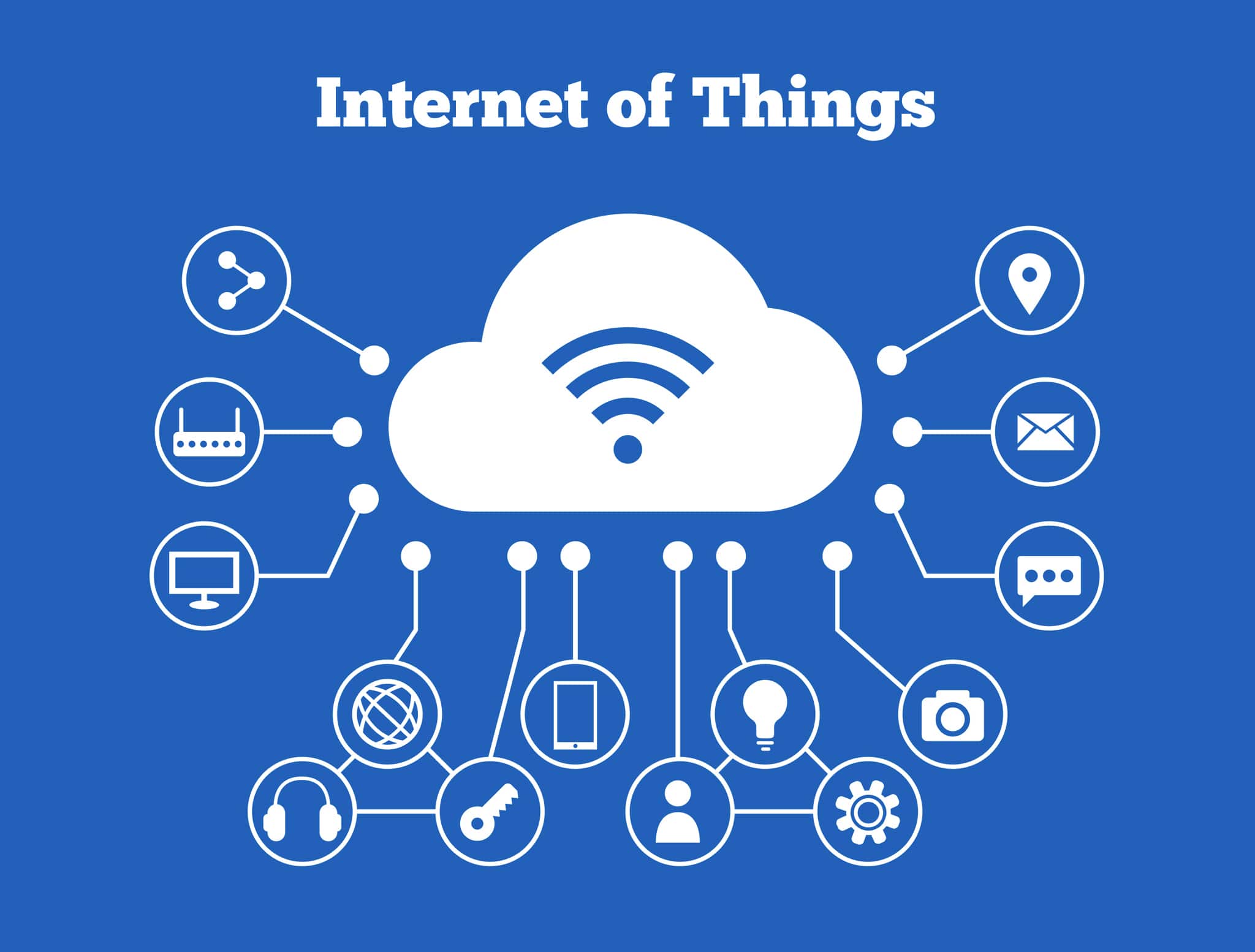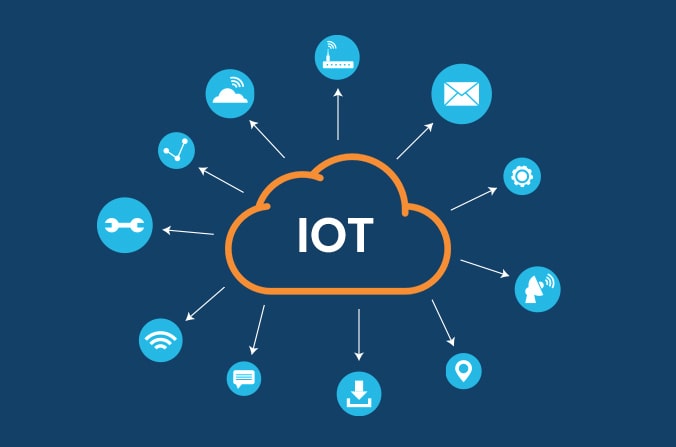Understanding Cloud-based Internet of Things (IoT) Platforms
Cloud-based Internet of Things (IoT) platforms serve as the backbone of modern IoT systems, facilitating seamless integration, management, and analysis of IoT devices and data. These platforms offer a wide range of features and capabilities, enabling businesses to harness the true potential of IoT technology. By providing a centralized hub for managing and orchestrating IoT devices, cloud-based IoT platforms help organizations streamline operations, enhance productivity, and unlock new revenue streams.
At the core of cloud-based IoT platforms lies the ability to connect and manage a vast array of IoT devices. By offering robust device management features, these platforms ensure that devices remain up-to-date, secure, and functioning optimally. Furthermore, cloud-based IoT platforms provide advanced data management capabilities, enabling organizations to collect, store, process, and analyze IoT data at scale. This, in turn, empowers businesses to derive actionable insights from their IoT data, driving informed decision-making and fueling innovation.
In addition to device and data management, cloud-based IoT platforms offer a host of other essential features, such as security, scalability, real-time analytics, and interoperability. These features not only enhance the functionality and performance of IoT systems but also contribute to their long-term sustainability and growth. By adopting a cloud-based IoT platform, businesses can lay a solid foundation for their IoT initiatives, ensuring they remain competitive and agile in an ever-evolving technological landscape.

Key Features to Look for in Cloud-based IoT Platforms
When evaluating Cloud-based Internet of Things (IoT) platforms, it is crucial to consider several essential features that contribute to the overall functionality, performance, and security of IoT systems. These key features include data management, device management, security, scalability, real-time analytics, and interoperability.
Data Management
Data management is a critical aspect of any Cloud-based IoT platform, as it enables organizations to collect, store, process, and analyze IoT data effectively. A robust data management system should offer features such as data ingestion, data storage, data processing, and data visualization. These capabilities allow businesses to derive actionable insights from their IoT data, driving informed decision-making and fueling innovation.
Device Management
Device management is another essential feature of Cloud-based IoT platforms, ensuring the seamless integration, configuration, monitoring, and maintenance of IoT devices. A comprehensive device management system should provide features such as device registration, device provisioning, device monitoring, and device updates. By offering robust device management capabilities, IoT platforms enable organizations to maintain a healthy and secure IoT ecosystem.
Security
Security is a paramount concern for Cloud-based IoT platforms, as these systems often handle sensitive data and control critical infrastructure. As such, IoT platforms should incorporate robust security measures, including encryption, access control, and regular updates. By implementing stringent security protocols, IoT platforms can help businesses safeguard their data and assets, ensuring the long-term sustainability and growth of their IoT initiatives.
Scalability
Scalability is a key feature of Cloud-based IoT platforms, as it enables organizations to accommodate growing numbers of IoT devices and expanding data volumes. A scalable IoT platform should be able to handle increasing workloads without compromising performance or stability. By offering scalability, IoT platforms empower businesses to expand their IoT ecosystems and capitalize on new opportunities as they arise.
Real-time Analytics
Real-time analytics is a valuable feature of Cloud-based IoT platforms, as it enables organizations to process and analyze IoT data in near real-time. Real-time analytics can help businesses identify trends, detect anomalies, and make data-driven decisions rapidly. By incorporating real-time analytics capabilities, IoT platforms can provide businesses with a competitive edge in today’s fast-paced technological landscape.
Interoperability
Interoperability is a critical feature of Cloud-based IoT platforms, as it ensures seamless communication and interaction between different IoT devices, systems, and applications. A interoperable IoT platform should support various communication protocols, data formats, and industry standards. By offering interoperability, IoT platforms enable businesses to build a cohesive and integrated IoT ecosystem, unlocking new possibilities for collaboration, innovation, and growth.

Leading Cloud-based IoT Platforms: A Comparative Analysis
Cloud-based Internet of Things (IoT) platforms have become increasingly popular in recent years, offering businesses a wide range of features and capabilities designed to streamline operations, enhance security, and improve overall efficiency. In this comparative analysis, we will examine the key offerings and unique selling points of five leading Cloud-based IoT platforms: AWS IoT, Microsoft Azure IoT, IBM Watson IoT, Google Cloud IoT, and SAP Leonardo IoT.
AWS IoT
Amazon Web Services (AWS) IoT is a comprehensive platform that offers a wide range of features, including device management, data management, and real-time analytics. AWS IoT supports various communication protocols, such as MQTT, CoAP, and HTTP, and provides robust security measures, such as encryption and access control. Additionally, AWS IoT integrates seamlessly with other AWS services, enabling businesses to build end-to-end IoT solutions quickly and easily.
Microsoft Azure IoT
Microsoft Azure IoT is a versatile platform that offers device management, data management, and real-time analytics capabilities. Azure IoT supports various communication protocols, such as MQTT, AMQP, and HTTP, and provides robust security measures, such as encryption and access control. Furthermore, Azure IoT integrates with Microsoft’s Power BI tool, enabling businesses to visualize and analyze their IoT data effectively.
IBM Watson IoT
IBM Watson IoT is a powerful platform that offers device management, data management, and real-time analytics capabilities. Watson IoT supports various communication protocols, such as MQTT, AMQP, and HTTP, and provides robust security measures, such as encryption and access control. Additionally, Watson IoT integrates with IBM’s AI and machine learning tools, enabling businesses to build intelligent IoT solutions that can learn and adapt over time.
Google Cloud IoT
Google Cloud IoT is a scalable platform that offers device management, data management, and real-time analytics capabilities. Google Cloud IoT supports various communication protocols, such as MQTT and HTTP, and provides robust security measures, such as encryption and access control. Furthermore, Google Cloud IoT integrates with Google’s AI and machine learning tools, enabling businesses to build intelligent IoT solutions that can learn and adapt over time.
SAP Leonardo IoT
SAP Leonardo IoT is a flexible platform that offers device management, data management, and real-time analytics capabilities. Leonardo IoT supports various communication protocols, such as MQTT, AMQP, and HTTP, and provides robust security measures, such as encryption and access control. Additionally, Leonardo IoT integrates with SAP’s enterprise software tools, enabling businesses to build end-to-end IoT solutions that can streamline operations and improve efficiency.
When selecting a Cloud-based IoT platform, businesses should consider factors such as business requirements, budget, scalability, and security. By carefully evaluating these factors, businesses can choose the most suitable platform for their needs and unlock the full potential of their IoT initiatives.
How to Choose the Right Cloud-based IoT Platform for Your Business
Selecting the most suitable Cloud-based Internet of Things (IoT) platform is a critical decision that can significantly impact a business’s operations and success. By following a step-by-step approach, businesses can ensure that they choose a platform that aligns with their unique requirements and goals. Here are some key factors to consider when choosing a Cloud-based IoT platform:
Step 1: Define Business Requirements
The first step in selecting a Cloud-based IoT platform is to define the business’s requirements. This includes identifying the specific use cases, such as predictive maintenance, remote monitoring, or asset tracking, and determining the necessary features and capabilities, such as data management, device management, and real-time analytics.
Step 2: Evaluate Scalability
Scalability is a critical factor when choosing a Cloud-based IoT platform. Businesses should evaluate the platform’s ability to handle increasing volumes of data and devices, as well as its capacity to expand to new locations and markets.
Step 3: Assess Security Measures
Security is a top concern for businesses when implementing Cloud-based IoT platforms. Businesses should evaluate the platform’s security measures, such as encryption, access control, and regular updates, to ensure that their data and devices are protected from potential threats and vulnerabilities.
Step 4: Consider Budget and Cost
Budget and cost are essential factors when choosing a Cloud-based IoT platform. Businesses should evaluate the platform’s pricing structure, including any additional fees for data storage, device management, or analytics, and ensure that it aligns with their budget and financial goals.
Step 5: Evaluate Integration Capabilities
Integration capabilities are critical when choosing a Cloud-based IoT platform. Businesses should evaluate the platform’s ability to integrate with existing systems and tools, as well as its compatibility with various communication protocols and devices.
Step 6: Assess Vendor Support and Services
Vendor support and services are essential when choosing a Cloud-based IoT platform. Businesses should evaluate the vendor’s reputation, expertise, and track record, as well as their availability and responsiveness to customer inquiries and issues.
By following these steps, businesses can choose the most suitable Cloud-based IoT platform that aligns with their unique requirements and goals. By carefully evaluating these factors, businesses can unlock the full potential of their IoT initiatives and ensure long-term success and growth.

Real-world Applications of Cloud-based Internet of Things (IoT) Platforms
Cloud-based Internet of Things (IoT) platforms have transformed various industries by enabling seamless integration and management of IoT devices. These platforms have facilitated the development of innovative solutions that have improved operational efficiency, enhanced customer experiences, and created new revenue streams. Here are some successful use cases and applications of Cloud-based IoT platforms:
Manufacturing
Cloud-based IoT platforms have revolutionized the manufacturing industry by enabling real-time monitoring and predictive maintenance of machines and equipment. These platforms have helped manufacturers reduce downtime, improve productivity, and reduce maintenance costs. For instance, GE Digital’s Predix platform has helped manufacturers optimize their operations by providing real-time insights into equipment performance, energy usage, and maintenance schedules.
Healthcare
Cloud-based IoT platforms have transformed the healthcare industry by enabling remote monitoring and telemedicine services. These platforms have helped healthcare providers improve patient outcomes, reduce hospital readmissions, and lower healthcare costs. For instance, Philips HealthSuite platform has helped healthcare providers monitor patients’ vital signs, medication adherence, and activity levels, enabling them to provide timely and personalized care.
Transportation
Cloud-based IoT platforms have disrupted the transportation industry by enabling real-time tracking and monitoring of vehicles and cargo. These platforms have helped transportation companies improve asset utilization, reduce fuel consumption, and enhance safety. For instance, SAP Leonardo IoT platform has helped transportation companies optimize their supply chain operations by providing real-time insights into vehicle location, speed, and condition.
Agriculture
Cloud-based IoT platforms have transformed the agriculture industry by enabling real-time monitoring and automation of irrigation, fertilization, and harvesting processes. These platforms have helped farmers improve crop yields, reduce water usage, and lower operational costs. For instance, Microsoft Azure IoT platform has helped farmers optimize their irrigation systems by providing real-time insights into soil moisture, temperature, and humidity levels.
These are just a few examples of how Cloud-based IoT platforms have enabled innovative solutions across various industries. By providing real-time insights, automation, and predictive analytics, these platforms have helped businesses improve operational efficiency, reduce costs, and enhance customer experiences. As Cloud-based IoT platforms continue to evolve, we can expect to see even more innovative applications and use cases in the future.

The Future of Cloud-based Internet of Things (IoT) Platforms
Cloud-based Internet of Things (IoT) platforms have come a long way since their inception, and their evolution is far from over. As technology continues to advance, we can expect to see new trends and developments that will shape the future of Cloud-based IoT platforms. Here are some emerging trends and future developments to look out for:
AI Integration
Artificial intelligence (AI) is becoming increasingly integrated into Cloud-based IoT platforms, enabling machines to learn from data and make intelligent decisions. AI can help IoT devices become more autonomous, predictive, and proactive, improving operational efficiency and reducing costs. For instance, AI-powered predictive maintenance can help businesses anticipate equipment failures before they occur, reducing downtime and maintenance costs.
Edge Computing
Edge computing is another trend that is gaining popularity in the IoT world. Edge computing involves processing data closer to the source, reducing latency, and improving response times. By processing data at the edge, businesses can reduce their reliance on centralized cloud infrastructure, improving scalability and reducing costs. Edge computing can also help improve security by reducing the amount of data transmitted over the network.
5G Technology
5G technology is expected to revolutionize the IoT industry by providing faster speeds, lower latency, and improved connectivity. 5G can support a higher density of connected devices, enabling more complex and sophisticated IoT applications. For instance, 5G can enable real-time video analytics for surveillance and security applications, improving public safety and security.
Blockchain Technology
Blockchain technology is another trend that is gaining popularity in the IoT world. Blockchain can provide a secure and decentralized method of managing IoT devices and data. By using blockchain, businesses can ensure the integrity and security of their IoT data, reducing the risk of data breaches and cyber attacks. Blockchain can also enable peer-to-peer transactions, reducing the need for intermediaries and improving efficiency.
Quantum Computing
Quantum computing is an emerging technology that has the potential to revolutionize the IoT industry. Quantum computing can process massive amounts of data quickly and efficiently, enabling real-time analytics and decision-making. Quantum computing can also help solve complex optimization problems, improving operational efficiency and reducing costs. However, quantum computing is still in its infancy, and it may take several years before it becomes mainstream.
In conclusion, Cloud-based IoT platforms are continuously evolving, and businesses must stay up-to-date with the latest trends and developments to remain competitive. AI integration, edge computing, 5G technology, blockchain technology, and quantum computing are some of the emerging trends and future developments that businesses should look out for. By leveraging these trends, businesses can improve operational efficiency, reduce costs, and enhance customer experiences, ensuring long-term success and growth.

Top Cloud-based Internet of Things (IoT) Platforms: A Comprehensive Review
Understanding Cloud-based IoT Platforms
Cloud-based Internet of Things (IoT) platforms are rapidly gaining popularity due to their ability to seamlessly integrate and manage IoT devices. These platforms provide a range of features, including data management, device management, security, scalability, real-time analytics, and interoperability, enabling businesses to leverage the full potential of IoT devices.
Key Features to Look for in Cloud-based IoT Platforms
When selecting a Cloud-based IoT platform, businesses should consider the following key features:
-
- Data management: The platform should be able to collect, store, and analyze data from IoT devices, providing real-time insights and analytics.
- Device management: The platform should be able to manage and monitor IoT devices, providing features such as device provisioning, configuration, and diagnostics.
- Security: The platform should provide robust security measures, including encryption, access control, and regular updates, to protect sensitive data and prevent unauthorized access.
- Scalability: The platform should be able to scale to support a large number of IoT devices and handle increasing data volumes.
- Real-time analytics: The platform should provide real-time analytics and insights, enabling businesses to make informed decisions and take proactive actions.
- Interoperability: The platform should be able to integrate with other systems and devices, enabling seamless communication and data exchange.
Leading Cloud-based IoT Platforms: A Comparative Analysis
Here is a detailed comparison of top Cloud-based IoT platforms, including AWS IoT, Microsoft Azure IoT, IBM Watson IoT, Google Cloud IoT, and SAP Leonardo IoT:
How to Choose the Right Cloud-based IoT Platform for Your Business
When selecting a Cloud-based IoT platform, businesses should consider the following factors:
-
-
- Business requirements: Identify the specific business requirements and use cases for the Cloud-based IoT platform.
- Budget: Consider the cost of the platform and ensure that it fits within the business budget.
- Scalability: Ensure that the platform can scale to support the business’s growing needs.
- Security: Ensure that the platform provides robust security measures to protect sensitive data and prevent unauthorized access.
- Integration: Ensure that the platform can integrate with other systems and devices, enabling seamless communication and data exchange.
-
Real-world Applications of Cloud-based IoT Platforms
Cloud-based IoT platforms have numerous real-world applications across various industries, including:
-
-
-
- Manufacturing: Cloud-based IoT platforms can enable real-time monitoring and predictive maintenance of manufacturing equipment, reducing downtime and maintenance costs.
- Healthcare: Cloud-based IoT platforms can enable remote patient monitoring and telehealth, improving patient outcomes and reducing healthcare costs.
- Transportation: Cloud-based IoT platforms can enable real-time tracking and monitoring of vehicles, improving fleet management and reducing operational costs.
- Agriculture: Cloud-based IoT platforms can enable real-time monitoring of soil moisture, temperature, and other environmental factors, improving crop yields and reducing water usage.
-
-
The Future of Cloud-based IoT Platforms
Emerging trends and future developments in Cloud-based IoT platforms include AI integration, edge computing, and 5G technology. These trends are expected to further enhance the capabilities of Cloud-based IoT platforms, enabling businesses to leverage the full potential of IoT devices and data.
Maximizing the Potential of Cloud-based IoT Platforms
To maximize the potential of Cloud-based IoT platforms, businesses should consider the following tips and strategies:
-
-
-
-
- Define clear business objectives and use cases for the platform.
- Select a platform that meets the business’s specific requirements and budget.
- Implement robust security measures to protect sensitive data and prevent unauthorized access.
- Regularly monitor and analyze data to gain insights and make informed decisions.
- Continuously evaluate and optimize the platform to ensure that it meets the business’s evolving needs.
-
-
-

Maximizing the Potential of Cloud-based Internet of Things (IoT) Platforms
To fully leverage the potential of Cloud-based Internet of Things (IoT) platforms, it is essential to adopt best practices and innovative strategies. Here are some tips for optimizing the use of these platforms, ensuring long-term success and growth:
-
-
-
-
-
- Continuous Monitoring and Optimization: Regularly monitor the performance of your IoT devices and applications to identify areas for improvement. Utilize real-time analytics and machine learning algorithms to optimize device settings, streamline processes, and reduce energy consumption.
- Employee Training and Awareness: Ensure that your team is well-versed in the features and capabilities of your chosen IoT platform. Provide regular training sessions and encourage knowledge sharing to foster a culture of innovation and continuous improvement.
- Collaboration and Partnerships: Collaborate with technology partners, IoT solution providers, and industry peers to stay abreast of the latest trends and advancements. Participate in forums, webinars, and conferences to expand your network and learn from others’ experiences.
- Integration with Existing Systems: Seamlessly integrate your IoT platform with existing enterprise systems, such as CRM, ERP, and supply chain management tools, to create a cohesive and efficient digital ecosystem. This will enable you to streamline workflows, reduce manual data entry, and improve decision-making.
- Security Best Practices: Implement robust security measures, such as encryption, access control, and regular updates, to protect your IoT devices and data from potential threats. Establish a dedicated security team to monitor and manage security incidents and ensure compliance with industry regulations.
- Phased Implementation: Adopt a phased implementation approach, starting with a small-scale pilot project before rolling out the solution across your organization. This will help you identify and address any challenges or limitations, ensuring a smooth and successful deployment.
- Scalability and Flexibility: Choose a Cloud-based IoT platform that offers scalability and flexibility to accommodate your organization’s evolving needs. This will enable you to easily add or remove devices, expand your IoT network, and adapt to changing business requirements.
-
-
-
-
By following these best practices, you can maximize the potential of Cloud-based Internet of Things (IoT) platforms, driving innovation, improving operational efficiency, and creating new growth opportunities for your business.
For more information on Cloud-based IoT platforms, refer to the previous sections of this comprehensive review. Each section offers valuable insights and guidance on understanding, selecting, and implementing these powerful technologies, helping you make informed decisions and achieve long-term success in your IoT journey.

